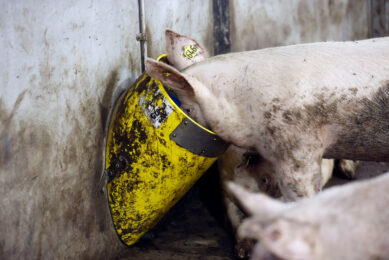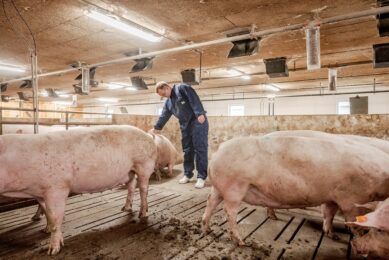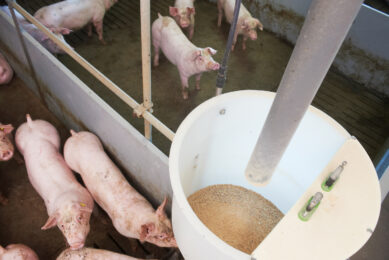Effect hammer mill size on pig performance
The Australian Pork CRC investigated the influence of hammer mill screen size and grain source (wheat or sorghum) on the growth performance of male grower pigs.
Processing of grain prior to feed manufacturing is common practice to reduce particle size, thereby increasing the surface area of the grain susceptible to the pig’s digestive enzymes. The result is generally an improvement in nutrient digestibility and hence enhanced growth performance of the animal. Hammer milling is commonly used in commercial feed mills to reduce the particle size of the grain. The hammer mill utilises metal arms that grind the grain by pushing it through a metal screen, with particle size altered through the use of different screen sizes.
Given the increased utilisation of sorghum in pig diets, it is important to clarify whether hammer mill screen size will impact on production performance of growing pigs when offered predominately wheat or sorghum based diets. Therefore the aim of this study was to determine the impact of hammer mill screen size (2 mm or 3 mm) and predominant grain source (sorghum or wheat) on the growth performance of group housed growing pigs.
Experimental set up
A total of 864 male growers (Large White x Landrace, PrimeGro™ genetics) were selected at 10 weeks of age and housed in group pens of 18 pigs per pen. Pigs were selected over a six week period, 8 pens per week with a mean start weight of 24.42 ± 0.11 kg (mean ± SE). Within replicate, pens were randomly assigned to a 2 x 2 factorial experiment, with the respective factors being hammer mill screen size (2 mm or 3 mm screen) and the predominant grain source (wheat or sorghum).
Key findings
It was showed that reducing the hammer mill screen size from 3 mm to 2 mm reduced average particle size of the grain (wheat: 639 and 552 µm; sorghum: 654 and 602 µm; respectively for the 3mm and 2mm screens). Pellet quality was reduced when sorghum was included in the diet, particularly when sorghum was processed through the 2 mm hammer mill screen. Growth performance was reduced when grower pigs were offered the sorghum based diets compared to the wheat based diets (738.4 and 707.3 g/d respectively for the wheat and sorghum based diets, P=0.040). It is likely that this reduction in performance was caused by an increase in feed wastage due to the poorer pellet quality of the diet. Lastly, reducing hammer mill screen size from 3 mm to 2 mm for the wheat based diet resulted in an improvement in overall feed efficiency of approximately 5 %.
The results from this investigation suggest that the 3 mm screen size should be used to maximise pellet quality if sorghum is to be included in grower pig diets processed through a hammer mill system. When sorghum is excluded from the diet, a 2 mm hammer mill screen will maximise feed efficiency when wheat is the predominant grain source.
Related website
• Pork CRC











